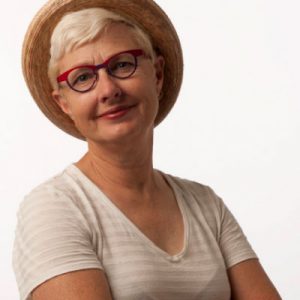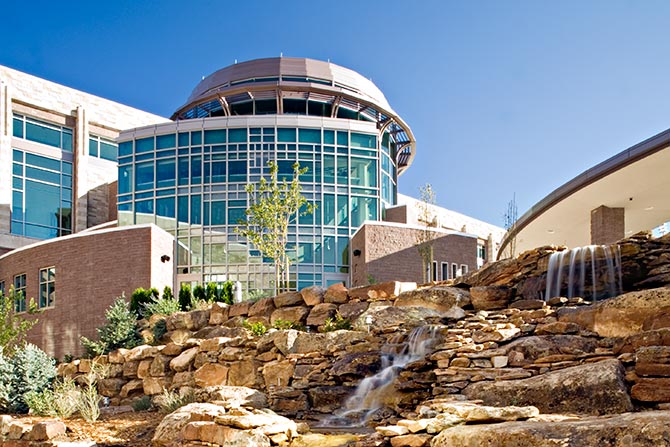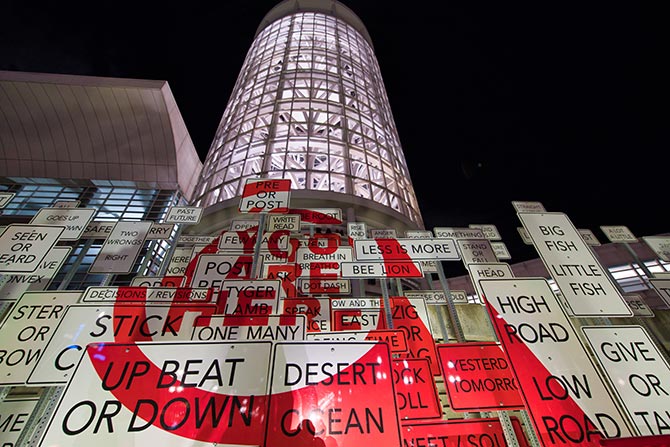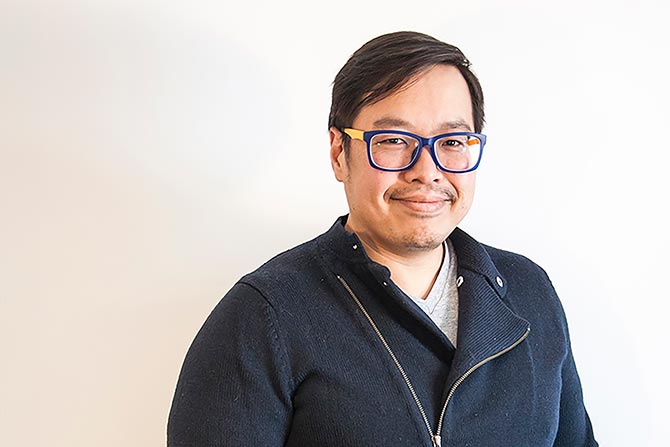As part of our ongoing series of interviews with architectural legends, we are proud to present this interview with Timothy F. Thomas, AIA. We spoke about his lengthy career in architecture and the projects he’s most proud of. We hope you enjoy learning more about Tim as much as we did.
This interview has been edited for length and clarity.
Tim Thomas is a very well‑regarded architect who specializes in medical and laboratory research facilities. A former president of the AIA Utah, he was one of the founders of Thomas Petersen Hammond, a firm known as research facility designers and planners. Spurred by a desire to widen their client base(s), Thomas Petersen Hammond and Jensen Hammond partnered to pursue a project at the University of Utah Medical Center. That successful venture led to the eventual merger of the two firms that became Architectural Nexus. Since Tim is widely known in the community for his generosity and humanity, it makes sense that his body of work is so user-focused.
When did you decide to become an architect?
In high school. My father was an architect, and I enjoyed being around his office, his clientele and the individuals that worked for him. Even though my father did not want me to become an architect, I persuaded myself that it was a profession I wanted to invest my life in. Did I realize then the scope of what the profession entailed? I had some idea. But over time, I became aware of the good things and some of the more difficult attributes of practicing architecture.
Why did he not want you to become an architect?
I don’t have a really good answer. I do know that he did not want me to become an architect and thought I should become a structural engineer.
But you convinced yourself, if not him?
Yes. The next interface I had with architecture was at the University of Utah School of Architecture. The very first day at the school, an individual was talking to a group of 45 students entering the first year. He said to us, “Look to your right, to your left, and upon graduation, these individuals will not be here because of the rigorous nature of the school.”
What inspired you to keep going?
I enjoyed the process. I enjoyed being given a client who had a list of needs and wants and learning the differences. The critiques and the dialogues with the instructors in the college were meaningful. I was always excited about graduating and entering the profession. I think I ultimately graduated first in my class. Of the 45 that I started with, there were seven who graduated. This calls into question the effectiveness of the schooling process. Perhaps if it were more effective, there may have been more people graduating in my class, or it could have been the quality of the students.
When I was going to school, I had the opportunity to work for Sir Frederick Gibberd, a storied architect in England. He was knighted by the Queen. My wife and I were newly married and spent a summer in London. I worked on a nuclear power plant in his office. The engineering attributes of that project were certainly not in my purview, but I did have input on the architectural expression of what was occurring in the guts of it.
From that project, I learned how important it is to rely on the expertise of structural, mechanical, electrical and civil engineers. You have to hire the best to ensure you’ll become ultimately successful and avoid problems with those disciplines. Having really good people to work with was a joy: creating something that fulfilled the agenda of a client. In my practice, I also specialized in research projects, medical research and physical science research. I specialized in laboratories.
You graduated and what happened next?
I graduated in 1968 and went to work for an excellent architectural firm, Edwards and Daniels. I had a nice relationship with those individuals as mentors. Then I went to work for Richard Prowse, the developer of Prowsewood, to design their projects and augment their in-house capacity for plans and specs of specific unit types as they spun off their product to other locations. Then, that became a little tedious. In 1973, after spending enough time to qualify and pass the Architectural Record Exams, Stephen Peterson, who I graduated with, another graduating student, Jack Hammond, and I decided to hang our own shingle.
Had you always wanted to go out on your own?
Yes. I enjoyed the experience of working for others and learning things that I wanted to do and things I didn’t want to do. But I thought it was the best way to manage the outcomes because having someone looking over your shoulder was, in some instances, less than optimal. So, we practiced as Thomas Peterson Hammond for a number of years.
How did you get your clients?
I worked at the University of Utah with individuals in Campus Planning and Design on smaller projects. The individuals that I worked for had smaller projects and had both feet on the floor. They knew what they wanted and what they needed. I listened carefully and programmed what we were going to accomplish and had them sign off. I think I gained a reputation of being a responsive architect.
My first large standalone project was the University of Utah’s Biomedical Polymer Research Building. It was the first project on the campus that had facilities designed for three separate colleges: Medicine, Pharmacy and Engineering. It is the architect’s responsibility to equip the building to not only fulfill the needs and desires of the current occupants from those three colleges, but the future, because change is the name of the game. That was one of the successful attributes of that first project.
How did the three partners distribute the responsibilities?
A majority of my practice was pretty specialized, and so I think my interface with Steve and Jack was somewhat limited because their portfolios didn’t really align themselves with research projects.
We ended up needing a business manager who managed the practice’s funding and cash flow. Steve handled mostly the hiring and firing. I remember Jack tried to fire somebody and at the end of their conversation, the employee really didn’t understand that he was fired.
Clear communication was a cornerstone of my agenda with my clients because without it, you create a situation with unfulfilled expectations. We have expectations. Your client has expectations. Without resolution, you’re going to wish you had communication habits that were clear.
Talk about your merger with Jensen Haslem.
We were in competition with Jensen Haslem, and there was kind of a combination of circumstances that brought us to joining our firms. I realized that in Jensen Haslem, there were individuals whose expertise I admired. There was a general contractor who, in talking with the gorillas in the room at the university, suggested if we teamed Jensen Haslem, we’d have a really good shot at a new project at the university hospital. We decided to partner, and we executed the Critical Care Pavilion at the university hospital. After that we went after a hospital project in Durango, Colorado, and we were successful in getting it. As I understand, that hospital in Durango remains one of the more profitable hospitals.
We worked hard at an efficient layout so that any one department could expand without affecting other departments, which is a historic problem in hospitals. We have more patients needing this service, and the department is kind of landlocked. How do you deal with that? There’s a domino effect. You have to move some people out to make room for this to go; all those issues about designing a hospital to accommodate changing needs.
And the same holds true with laboratories. One of the attributes of a successful laboratory is that all of the utilities are brought to a lab. The original occupant might not need ionized water, but you bring it there anyway; over time, eventually somebody will need that. And if it’s available, then the set up for a new client is diminished. It is important to create a lab that serves the next group that comes in so that the money spent upfront isn’t lost in remodeling. Things change a lot and I think the success of a building is the degree to which it can respond to change.
So, you officially merged and that expanded your marketing and project capacities. How did it all play out for you?
For me, personally, it was all positive. I don’t think any architectural firm is free of cash flow issues, or is free of employee performance problems, or carving out time to work with marketing staff because you’re so involved with the current project on your table. There’s always kind of an ebb and flow of productive versus not so productive activities.
Part of the practice of architecture that I miss the most is working with the individuals who will use what we, together, designed: the architect, the engineers and the client group involved in a research project. I enjoyed making sure the clients were happy with the suggestions we made to streamline their activities and to make them as productive as possible.
In the Biomedical Polymer project, we carefully studied with the structural engineers the vibration requirements that needed to be in place for things like the robotic mapping of the human genome, which was one of the research activities that was in there. We had all kinds of machine labs, and we had an individual who was studying how to interface an artificial eye with the brain.
It was so fun for me, as a lead architect in these research projects, to get on the ground floor of all of these cutting-edge research protocols that we were going to accommodate in these new buildings. It was just an enjoyable experience to interface with these brilliant minds that had invested their lives in various attributes of research — for me to have the opportunity to talk to them and to try and get the feel for what they were trying to accomplish, and to accommodate their needs to the point where they could give me a great recommendation for the next person that I had the opportunity to work for.
Talk about changes that occurred over your career.
I’ve had a long successful career so the answer is not straightforward. I’m building my own coffin. And I want to take with me things that meant something to me. It’s 90% there and I am equipping it with my harmonica and my fly rod. I built my own house, so I’ve got the tool belt and the hammer that I used and just a bunch of things that that were meaningful in my life.
I am also taking mechanical pencils and triangles and a slide rule. I’ve got a circular slide rule and a kind of normal sliding slide rule. I’m taking a bunch of stuff in my coffin that I used to earn a living. I’m not taking a computer.
So, in answer to your question about what changed: the technology of the silicon chip. It impacted my ability to create a design that responds to the dialogue that I had with clients. It transitioned from my early days as an architect, when I was doing drawings and specs, to having to rely on an individual who was brought up using computers.
I can’t count the number of New Year’s resolutions I made every year. It started with, “I’m going to learn how to use this apparatus for more than word processing and use it to draw with.” It was a disappointing New Year’s resolution, because I never had the time to devote to just saying, “Okay, time out. I’m going to take a month and have somebody smart on this teach me how to do it.” I was still making sketches and floor plans on fodder that I could turn over to a couple of people who could put it in context and into a device that printed it out.
I remember we had one of the first CAD machines that could make a drawing and send it to a printer. This printer was using ink pens and it would start down in this corner and you could just watch this pen, start drawing the floorplan, and then it would stop working here and it would go up here and draw. I would ask the Computer Smart Guy, “How come it didn’t finish what’s down here?” He didn’t know.
But it was interesting, to say the least, to see the early application of computers and how I interfaced with it. I think if I had any success in that transition, it was having trusted individuals I could give a sketch to and they could configure it and ask questions. The rapport between me and a CAD drafter was as important to the development of a project as the communication between me and a client.
Were there any disappointments along the way?
Other than a contract dispute I had on my last project, I don’t think I had disappointments that were lingering at all. I just enjoyed practicing architecture to a great extent.
Maybe one of the things that defined my approach to life is my first wife dying of cancer. She was a wonderful person. That was a huge disappointment to me, to have the love of my life pass away. That experience taught me that you have problems and you have to increase your ability to deal with them. That was a pretty tough nut to swallow.
I’ve run nine marathons in St. George. I happened to be running next to a guy from Hawaii, and I was feeling it and he was feeling it. He said, “You know, when I get to these points in a marathon I think, ‘What is the worst thing that I have had to deal with in my life?’ and compare it to what we’re experiencing at this juncture. This doesn’t seem to be as much of a deal as it might otherwise.”
I always remember that and think of the passing of my wife. Running the marathons wasn’t that tough. I think my mentality was tempered to a degree by disappointments outside of the practice of architecture.
What advice do you have for people launching their careers in architecture?
Aligning yourself with clients who have integrity, partners who have integrity and people in the office who have integrity. I advise doing your best work every day with people that you love to work with. Because if you go to work every day and you don’t love the people that you’re working with, it’s more difficult. And I think love is an appropriate term. This is not romantic love, obviously, but it’s the joy that one feels when one’s effort is appreciated by the people you work with, and by your family and your clients.
If you’re not finding that type of fulfillment where you’re at, you ought to cast elsewhere to determine if the problem is yours or somebody else’s.
To view the full interview, click the link/video below.









